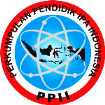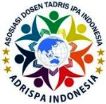Pembelajaran Gelombang Bunyi Menggunakan Alat Musik Suling dan Gawai pada Pelajaran IPA SMP di Masa Pandemi Covid-19
Abstract
ABSTRACT
The COVID-19 pandemic requires teachers to think carefully and creatively in designing learning so that it remains interactive and appropriate to achieve the learning goals. Physics learning with using a flute and a smartphone described in this paper is the result of a thought process about how students can still conduct experiments from home using simple equipment to measure the speed of sound in the air and at the same time learn the concepts of loudness and pitch of sound. A total of 37 eighth grade students in 2020/2021 academic year and 23 students in 2018/2019 acadeymic year at a private junior high school in Bekasi were involved in a pre-experimental study with a one-group posttest only design. A set of 10-item multiple-choice diagnostic tests taken from the Mechanical Wave Conceptual Survey and summative tests in the form of structured questions were arranged to test students' conceptual understanding after receiving sound wave learning. The average of diagnostic test and summative test in the 2018/2019 and 2020/2021 academic years were 30, 48 and 60 respectively out of 100 with a summative test completion percentage of 35% in 2018/2019 and 70% in 2020/2021 .
Keywords: physics experiment, sound waves, recorder, smartphone
ABSTRAK
Masa pandemi Covid-19 menuntut guru untuk terus berpikir secara hati-hati dan kreatif dalam merancang pembelajaran agar tetap interaktif dan tepat mencapai tujuan pembelajaran yang ditetapkan. Pembelajaran dengan menggunakan suling dan berbantuan gawai yang dipaparkan dalam tulisan ini merupakan hasil dari proses berpikir tentang bagaimana siswa tetap dapat melakukan eksperimen dari rumah memanfaatkan peralatan sederhana untuk mengukur kelajuan gelombang bunyi di udara dan sekaligus mempelajari konsep kekerasan bunyi (loudness) dan tinggi nada (pitch) bunyi. Siswa kelas delapan sebanyak 37 siswa tahun ajaran 2020/2021 dan 23 siswa tahun ajaran 2018/2019 pada salah satu sekolah menengah pertama swasta di Kota Bekasi dilibatkan dalam penelitian pre-experiment dengan desain one-group posttest only. Seperangkat tes diagnostik berbentuk pilihan ganda sebanyak 10 butir yang diambil dari Mechanical Wave Conceptual Survey dan tes sumatif berbentuk uraian disusun untuk menguji pemahaman konsep siswa setelah mendapatkan pembelajaran gelombang bunyi. Rata-rata tes diagnostik dan tes sumatif pada tahun ajaran 2018/2019 dan 2020/2021 berturut-turut sebesar 30, 48 dan 60 dari maksimum nilai 100 dengan persentase ketuntasan tes sumatif sebesar 35% di 2018/2019 dan 70% di 2020/2021.
Kata kunci: eksperimen fisika, gelombang bunyi, suling, gawai
Full Text:
PDFReferences
Bacon, M. E. (2012). Speed of Sound Versus Temperature Using PVC Pipes Open at Both Ends.” Phys. Teach., 50, 351–353. https://doi.org/10.1119/1.4745687
Barniol, P. & Zavala, G. (2016) Mechanical Waves Conceptual Survey: Its Modification and Conversion to a Standard Multiple-choice Test. Physical Review Physics Education Research, 12, 010107. https://doi.org/10.1103/PhysRevPhysEducRes.12.010107
Caleon, I. & Subramaniam, R. (2010) Development and Application of a Three‐tier Diagnostic Test to Assess Secondary Students’ Understanding of Waves. International Journal of Science Education, 32 (7), 939-961. https://doi.org/10.1080/09500690902890130
Cambridge Assessment International Education. (2018). Teacher guide Cambridge Lower Secondary Science (1113). UCLES.
Compari, E.G., Barbetta, M., Braibant, S., Cuzzuol, N., Gesuato, A., Maggiore, L., Marulli, F., Venturoli, G., & Vignali, C. (2021). Physics Laboratory at Home During the COVID-19 Pandemic. Phys. Teach., 59(1), 68-71. https://doi.org/10.1119/5.0020515
Didiş, N., Eryilmaz, E., & Erkoç, Ş. (2014). Investigating students’ mental models about the quantization of light, energy, and angular momentum. Physical Review Physics Education Research, 10(2), 020127(28). https://doi.org/10.1103/PhysRevSTPER.10.020127
Eshach, H. & Schwartzb, J. L. (2006). Sound Stuff Naïve Materialism in Middle-school Students’ Conceptions of Sound. International Journal of Science Education, 28 (7), 733–764. https://doi.org/10.1080/09500690500277938
Hernandez, M. I., Couso, D. & Pinto, R. (2012). The Analysis of Students’ Conceptions as a Support for Designinga Teaching/learning Sequence on The Acoustic Propertiesof Materials. J Sci Educ Technol 21, 702–712. https://doi.org/10.1007/s10956-011-9358-4
Hrepic, Z., Zollman, D. A., & Rebello, N. S. (2010). Identifying Students’ Mental Models of Sound Propagation: The Role of Conceptual Blending in Understanding Conceptual Change. Physical Review Physics Education Research, 6(2), 020144(18). https://doi.org/10.1103/PhysRevSTPER.6.020144.
Huggins, E. (2008). Speed of Sound in Metal Pipes: an Inexpensive Lab. Phys. Teach, 46, 13–14. https://doi.org/10.1119/1.2823993
Iliaki, G., Velentzas, A., Michailidi, E. & Stavrou, D. (2018) Exploring The Music: a Teaching-Learning Sequence About Sound in Authentic Settings. Research in Science & Technological Education, 218-238. https://doi.org/10.1080/02635143.2018.1526170
Iqbal, M., Ahmed, F., Iqbal, A., & Uddin, Z. (2020). Teaching Physics Online Through Spreadsheets in a Pandemic Situation. Physics Education, 55(6), 063006
Lawson, A. (2010). "Teaching Inquiry Science in Middle and Secondary Schools.” SAGE Publication, Inc.
Leccia, S., Colantonio, A., Puddu, E., Galano, S. & Testa, I. (2015) Teaching About Mechanical Waves and Sound With a Tuning Fork and The Sun. Physics Education, 50 (6) IOPP, 677-689.
Ozcan, O. (2015). Invetigating Students’ Mental Models About The Nature of Light in Different Contexts. Eur. J. Phys., 36, 065042 (16pp).
Pejuan, A., Bohigas, X., Jaen, X. & Periago, C. (2012) Misconceptions About Sound Among Engineering Students, J Sci Educ Technol, 21, 669-685. https://doi.org/10.1007/s10956-011-9356-6
Pereira da Silva, W., Precker, J. W., & e Silva, D. D. P. S. (2005). The Speed of Sound in Air: An at-home Experiment. Phys. Teach., 43, 219–221. https://doi.org/10.1119/1.1888080
Speed of Sound. (2021, March 20). In Wikipedia. https://en.wikipedia.org/w/index.php?title=Speed_of_sound&action=history
Staacks, S. Hűtz, S., Heinke, H., & Stampfer, C. (2018). Advanced Tools for Smartphone-based Experiment: phypox. Physics Education, 53(4), 045009.
Tongchai, A., Sharma, M., Johnston, I., Arayathanitkul, K. & Soankwan, C. (2009). Developing, Evaluating and Demonstrating the Use of a Conceptual Survey in Mechanical Waves. Int. J. Sci. Educ., 31 (18), 2437. https://doi.org/10.1080/09500690802389605
Vuchelabs. (2017). Advanced Spectrum Analyzer PRO (Version 2.1) [Mobile app]. Google Play Store. https://play.google.com/store/apps/details?id=com.vuche.asap&hl=en&gl=US
White, J.D. (2020). Teaching General Physics in a COVID-19 Environment: Insight from Taiwan. Physics Education, 55(6), 065027.
Yusmaridi, M., Ambiyar, A., Aziz, I. & Juita, D. (2021). Peningkatan Kualitas Pembelajaran Mata Kuliah Evaluasi Hasil Belajar Fisika Melalui Penggunaan Asesmen Alternatif di Masa Pandemi Covid-19. Jounal of Natural Science and Integration, 4(1), 22-31. DOI : 10.24014/jnsi.v4i1.10932
Zulirfan, Z., Yennita, Y., Rahmad, M., & Purnama, A. (2021) Desain dan Konstruksi Prototype KIT Proyek STEM Sebagai Media Pembelajaran IPA SMP Secara Daring pada Topik Aplikasi Listrik Dinamis. Jounal of Natural Science and Integration, 4(1), 22-31. DOI : 10.24014/jnsi.v4i1.11446
DOI: http://dx.doi.org/10.24014/jnsi.v4i2.13277
Refbacks
- There are currently no refbacks.

Journal of Natural Science and Integration
E-ISSN: 2620-5092 P-ISSN: 2620-4967
Published By:
Department of Science Education, Faculty of Education and Teacher Training,
State Islamic University of Sultan Syarif Kasim Riau, Indonesia
Mailing Address:
Jl. H.R Soebrantas Km. 15 No. 155
Kelurahan Simpang Baru
Kecamatan Tuah Madani, Pekanbaru, Riau, Indonesia
Email: jnsi.tadrisipa@uin-suska.ac.id
Indexed By:
Journal of Natural Science and Integration is licensed under a Creative Commons Attribution 4.0 International License.


_-_Copyy2.png)






.jpg)
.png)
.jpg)
.jpg)




